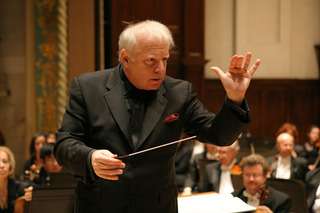|
Back
Decadence, Death and Dance New York
Isaac Stern Auditorium, Carnegie Hall
05/09/2013 -
“Spring for Music”
Sergei Rachmaninoff: Caprice bohémien, opus 12 – Isle of the Dead, opus 29
Kurt Weill: The Seven Deadly Sins
Maurice Ravel: La Valse
Storm Large (Soprano), Jorge Gaza, Carl Moe (Tenors), Anton Belov, Richard Zeller (Baritones)
Detroit Symphony Orchestra, Leonard Slatkin (Music Director/Conductor)

L. Slatkin (© Donald Dietz/Detroit Symphony Orchestra
Rare is the conductor innately equipped to conduct Kurt Weill. Do you play him as a German-Jewish intellectual steeped in the Hebraic chants of his cantor father? Was he the serious student of Arnold Schoenberg, an adept atonal composer? Was he a cabaret composer of the heady Berlin of the Weimar Republic? A left-wing ideologue like his collaborator Bertolt Brecht? A successful Broadway composer whose tunes were as engaging as Gershwin’s?
For the satires like Threepenny Opera or Rise and Fall of the City of Mahagonny, the one “serious” conductor who gets him just right is a stolid British conductor who specializes in Webern, Birtwistle and Knussen. But David Atherton knows never to push Weill too far, to let those crack-sharp notes do their tricks. Like a karate expert, Weill knew how to make the music work for him, and no conductor needed take any liberties.
Leonard Slatkin is has the widest possible repertory, though this was the first time I ever heard him do Kurt Weill. Then again, orchestras who come to Carnegie Hall for the “Spring for Music” festival feel obliged to try new works, both for themselves and for New York audiences. (After all, if they fall flat, they can always go back to Winnipeg or Dallas or, in this case, Detroit, and play their old repertory.)
How did Leonard Slatkin do with The Seven Deadly Sins of the Petite Bourgeoisie (the original title, though the last four words were eliminated last night)? Well, Mr. Slatkin cheated a bit, with the use of two supports. First was the conductor’s own upbringing in the fleshpots of Hollywood, where his father was a leading conductor and performer. Compared to Hollywood, Brecht’s “seven deadly sins” could have been Mother Theresa’s Ten Commandments.

S. Large (© Oregon Symphony)
Second was that his performer was the absolutely dazzling soprano, Storm Large, rock star, cabaret singer, actress, author, songwriter, and an incomparable soloist for this Weill ballet/drama/song cycle.
The Seven Deadly Sins, the final work written with Brecht (the Communist dramatist was never allowed in America), is entertaining enough, though the mock chorales, waltzes, fox trots, barber-shop quartets, are far too derivative from Threepenny Opera. But the translation by W.H. Auden and Chester Kallman has the same bite, raunchiness, and pungency as their Rake’s Progress, and with the right singer, can be effective.
With Storm Large, effectiveness is an understatement. Wearing a Monroe-style (Marilyn, not James) ivory-white backless dress, she never tried to imitate the usual German smoky-voiced cabaret singer. Her voice was purely American, her voice was perfectly in pitch whether purring or shouting or narrating. She was edgy, sexy, she was vamp, whore and nun. And while her four-man “family” were all good, and Mr. Slatkin conducted with the right passion, one could take neither eyes nor ears from Storm Large.
Prior to this, Leonard Slatkin had played two Rachmaninov tone-poems of opposing quality. Isle of the Dead is the Russian composer at his best. The orchestra churns and sighs, the Detroit Symphony Orchestra’s horns let out a despairing wail, and the strings, which under Mr. Slatkin’s tutelage are alive and spontaneous, produced storms and waves of sound. Naturally it ended with the Dies Irae, the composer’s obsessive theme. Here, though, it was not Rachmaninov’s signature tune, it fit with the theme.
The opening Caprice bohémien came from a youthful confident composer who obviously took Tchaikovsky and Glazunov as his models before finding his own voice. The music is supposed to embrace “Gypsy themes”. And while I can easily imagine Brahms, Liszt and Bartók sitting around a campfire with some Romani musicians, enjoying a few drinks and a lot of laughs, I find it ludicrous to imagine last night’s saturnine composer-pianist whooping it up with gypsies. The tunes were very proper, played very properly, with brilliant orchestration. But it was far from the personal Rachmaninov which makes Isle of the Dead so powerful.
After the Weill Sins, Leonard Slatkin finished off with Ravel’s La Valse. While it showed off this orchestra, Mr. Slatkin didn’t waste any time with refinements. It could have been a grand encore piece, for a most colorful concert which could have been Detroit homage to Decadence, Death and most decidedly, Dance.
Harry Rolnick
|